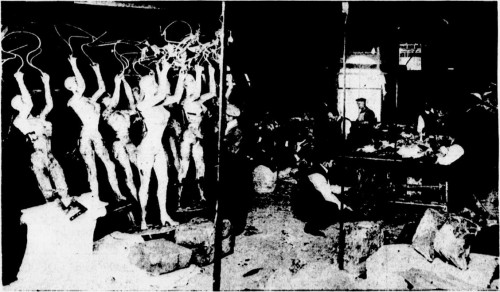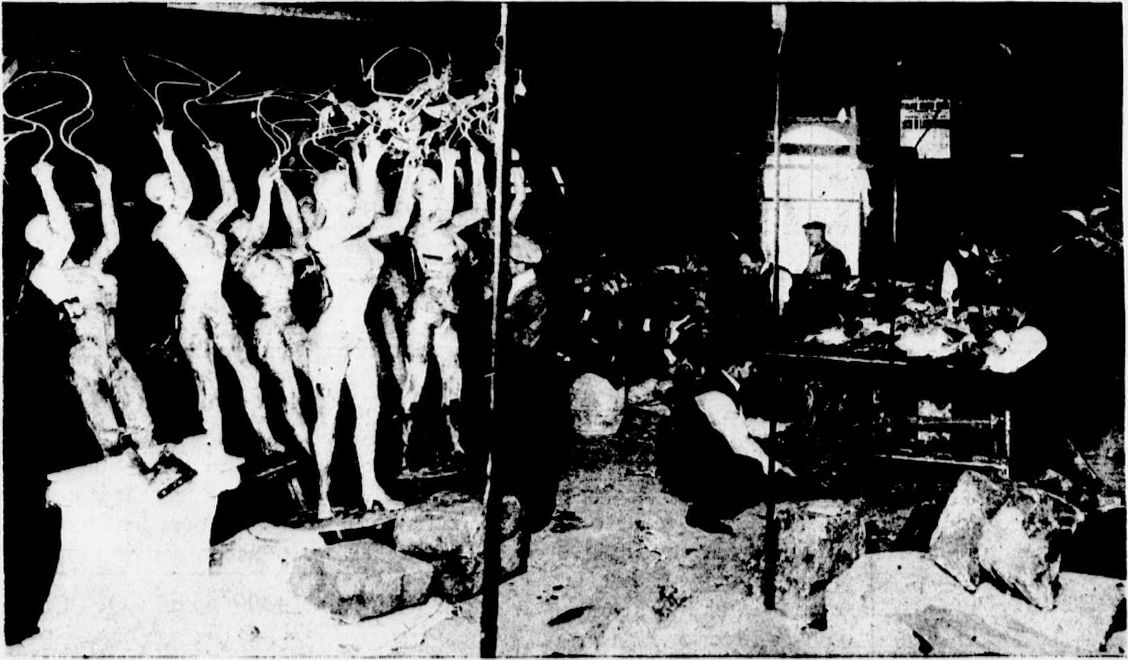The following article is from a 1913 issue of The Sun.
In modern stage affairs property men have risen to heights of artistry little dreamed of a few years ago, when the men handling what are known as the “properties” of a theatrical production were regarded as little more than unskilled labor. Nowadays the property man is expected to possess the skill of a sculptor as well as that of a portrait painter. In transporting the massive musical extravaganza entitled “Hop o’ My Thumb” from the Drury Lane Theatre in London to the Manhattan Opera House in this city a number of feminine figures were damaged. Since they comprised an important feature of an elaborate scene called the Garden of Statues the work of repair would necessarily have to be done in a masterly manner. The property men were called in and given instructions. An arm was missing on one figure, a leg on another and some had large holes torn in various portions of the form. One may well imagine that such a task would properly belong to a sculptor or an artist of ability; but not so in theatrical affairs. It is the duty of the property man and he must do it in a creditable manner, or be succeeded by one who can do so. Accompanying is a scene showing the property men working on the figures and making trick doves, the latter so constructed as to give every appearance of flying-just another of the manifold and difficult tasks assigned to the unrecognized genius known as the property man.

“Hop o’ My Thumb” is quite the largest theatrical production that has ever been imported from the Drury Lane Theatre. When “The Whip” was brought over last year it was thought the limit had been reached, as that production filled to overflowing the hold of one of the largest ocean vessels; but this year’s Drury Lane offering exceeds “The Whip” by nearly fifty extra large truck loads of scenic equipment. As the title indicates, the production is based on the fairy story by that name. Rehearsals have been in progress for several weeks and a crew of more than 100 men have been busy night and day preparing the stage of the Manhattan Opera House for the spectacle. This is no mean task, since some of the elaborate stage effects have made it necessary to practically rebuild the stage of the theatre from pit to fly gallery. When Oscar Hammerstein erected the Manhattan Opera House it was generally though that there was sufficient space in the big building for the largest kind of theatrical operations, but it would appear that the London managers have contrived a performance that will tax to the extreme limit the resources of the Hammerstein playhouse. While there is ample room for the rehearsals of the chorus and principals of the company the ballet of 150 had to seek quarters at the Seventy-first Regiment Armory, where for the past three weeks Ballet Mistress Maud Crompton, from the London Drury Lane Theatre, has been instructing the little army in what is promised to be a ballet of rare novelty and beauty. In the meantime, under the eaves of the roof and over the great auditorium of the theatre, another army of property men and wardrobe mistresses are busy in their part of the preparations. Originally published in The Sun, November 23, 1913, section 4, page 16.





